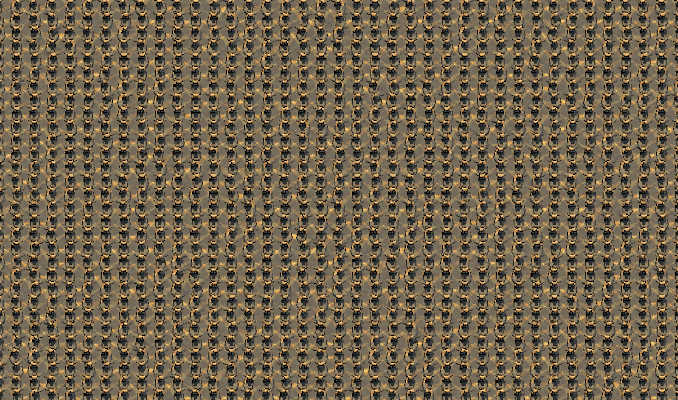Giant Honey Bee Shimmering Simulation
I’m fascinated by the way giant honey bees coordinate with each other to create this super cool wave/shimmer effect. Check them out in action here. They raise their abdomens in concert to create these wave-like patterns that ward off predators. I thought it’d be interesting to try and replicate the effect by simulating it, and maybe turn it into some sort of interactive thing.
I started by drawing a little bee to make testing a bit more interesting:

I used Godot for the simulation. First I wrote some code that generates a bunch of bees all in a grid. To allow communication amongst the bees, each bee has the ability to send a “shimmer signal” to each of its 8 neighbouring bees.

Before moving on I made the “bee grid” look a little more natural by randomly offsetting the bees, adding some little animations and giving them a background. This makes for a pretty neat looking hive.




I tried to keep the implementation for the shimmer behaviour as simple as possible. After spending a bunch of time carefully watching the bees do their thing, I came up with four parameters that I thought would reasonably capture the effect:
- shimmer threshold / wave strength,
- wave propagation,
- wave decay,
- shimmer cooldown.
The bees will only shimmer if the wave strength exceeds their shimmer threshold. This parameter makes it possible to have shimmer bouts that recruit a varying number of bees depending on the wave strength - it also effects the duration of the wave. A bee receives and accumulates shimmer signals from multiple bees during the wave propagation delay. Wave propagation is the speed at which the bees can communicate information. This limits the speed of the “waves”. Wave decay controls the speed at which the wave strength decreases. Each time a bee passes on the shimmer signal, the wave strength decays. Shimmer cooldown is the time it takes a bee to recover after performing an abdomen raise. The implication of this is that a bee can’t shimmer if it is shimmering already. Below is pseudocode for the shimmer behaviour.
func shimmer(wave_strength):
if can_shimmer and wave_strength >= shimmer_threshold:
can_shimmer = false
// send signal to neighbouring bees with slightly weaker wave strength.
emit_signal("shimmer", wave_strength - shimmer_decay)
start_cooldown_timer()
func received_shimmer_signal(wave_strength):
if start_propagation_delay_timer is stopped:
// With each shimmer signal received from neighbouring bees we increase the wave_strength.
wave_strength_accumulated = wave_strength + rand_range(0, grow_rate)
// Make the delay time a function of the wave_strength
propagation_delay.wait_time = max((1 - wave_strength_accumulated), 0) * time_scale + min_delay_time
start_propagation_delay_timer()
func propagation_delay_timeout():
shimmer(wave_strength_accumulated)
func cooldown_timeout():
can_shimmer = true
wave_strength_accumulated = 0
After a lot of trial and error I eventually arrived at this:

Close enough for me… Everything here was just clumsily put together after watching this video over and over again. If anyone knows of some actual research done on this behaviour, I’d love to hear about it :)
I finished it off by adding some sound effects. You can mess around with it yourself on itch.io.